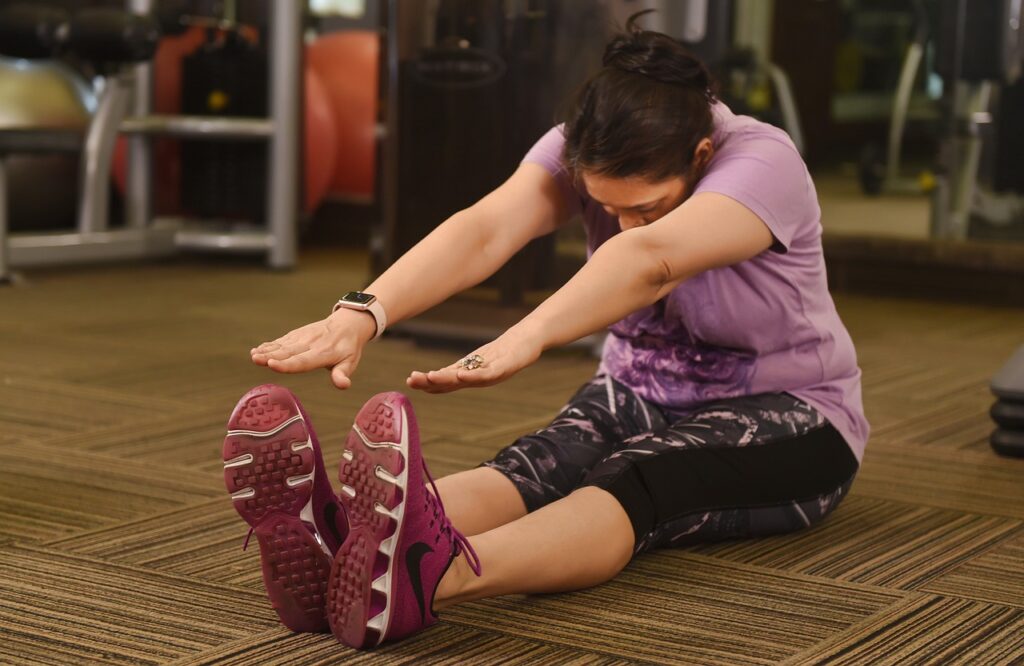Imagine being 70 years old and embarking on a daily routine that involves a simple act of walking. It may seem unassuming, but little do you know the immense benefits it can bring to your overall well-being. In this article, we explore the question of whether a 70-year-old should incorporate walking into their daily life. We uncover the advantages of this seemingly modest activity and the positive impacts it can have on both physical and mental health. So, gather your walking shoes and prepare to discover the wonders that await you on a daily stroll.
Benefits of Walking for a 70-Year-Old
Physical Health Benefits
Walking regularly can have numerous physical health benefits for a 70-year-old individual. One of the main advantages is improved cardiovascular health. By engaging in moderate-intensity walking, you can strengthen your heart and reduce the risk of heart disease, high blood pressure, and stroke. Walking also helps to increase lung capacity and improve respiratory function, making it easier to breathe.
Another physical benefit of walking is improved joint mobility and flexibility. As we age, our joints may become stiff, leading to discomfort and decreased range of motion. Walking helps to lubricate the joints and increases blood flow to the surrounding tissues, which can alleviate joint pain and stiffness.
Additionally, walking is a weight-bearing exercise that can help prevent or manage osteoporosis. By putting stress on the bones, walking stimulates bone density, reducing the risk of fractures.
Mental Health Benefits
In addition to the physical advantages, walking can have a positive impact on mental health for a 70-year-old individual. Regular walking can help enhance cognitive function and reduce the risk of cognitive decline and dementia. It improves blood flow to the brain, which promotes the growth of new neurons and improves overall brain health.
Walking also releases endorphins, which are natural mood-boosting hormones. This can have a significant impact on reducing stress, anxiety, and depression. Being outdoors and connecting with nature during walks can also elevate mood and foster a sense of calm and relaxation.
Social Benefits
Walking is not only beneficial for physical and mental health, but it can also provide opportunities for social interaction and companionship. Joining walking groups or clubs allows you to meet new people who share similar interests and goals. This can help combat feelings of loneliness and isolation, which are common among older adults.
Engaging in regular walks with friends or family members can also foster stronger bonds and create lasting memories. Walking together provides an opportunity for meaningful conversations and shared experiences.
Considerations for Walking as a 70-Year-Old
Consulting with a Healthcare Professional
Before starting a new walking routine, it is always recommended to consult with a healthcare professional. They can assess your current health condition and provide guidance specific to your needs. They may offer personalized advice on the frequency, duration, and intensity of walking that is suitable for you.
Assessing Physical Abilities
It is important to assess your physical abilities before embarking on a walking routine. This includes evaluating your balance, stamina, and overall strength. By understanding your limitations, you can tailor your walking routine accordingly and make adjustments as needed. It may be helpful to start with shorter walks and gradually increase the duration and intensity over time.
Choosing Appropriate Walking Routes
When choosing walking routes, it is essential to consider your physical abilities and comfort level. Opt for routes that are well-paved, well-lit, and have minimal traffic. Choose paths that are flat or have gentle slopes to minimize the risk of falls or injuries. Walking in scenic areas or parks can also enhance the enjoyment of your walks.
Safety Measures
To ensure your safety while walking, there are a few key safety measures to keep in mind. Always wear proper footwear with good traction to prevent slips and falls. Carry a mobile phone for emergencies and inform someone about your walking plans and estimated return time. If you have any health conditions or require assistance, consider walking with a buddy or wearing a medical alert bracelet.

Setting Realistic Goals
Determining Frequency and Duration
When setting goals for your walking routine, it is important to consider your fitness level and health condition. Start by aiming for at least 150 minutes of moderate-intensity walking per week, which can be broken down into shorter sessions throughout the day. As you become more accustomed to walking, gradually increase the time or frequency of your walks, as long as it feels comfortable for you.
Gradual Progression
To avoid overexertion and potential injuries, it is essential to progress gradually in your walking routine. Increase the duration or intensity of your walks by small increments each week. This allows your body to adapt and prevents unnecessary strain on your muscles and joints. Pay attention to any signs of fatigue or discomfort and adjust your pace accordingly.
Listening to the Body
When setting goals for your walking routine, it is important to listen to your body and respect its limits. If you experience pain, dizziness, or shortness of breath during or after walking, it may be a sign that you are pushing yourself too hard. Take rest days when needed, and don’t hesitate to modify your routine or seek professional advice if necessary.
Creating a Walking Routine
Establishing a Regular Schedule
To make walking a consistent habit, it can be helpful to establish a regular schedule. Choose specific days and times during the week that are dedicated to walking. By incorporating it into your daily routine, it becomes easier to stick with and ensures that you prioritize your health and well-being.
Incorporating Variety
To keep your walks enjoyable and engaging, incorporate variety into your routine. Explore different routes in your neighborhood or nearby parks. Consider walking on different surfaces such as grass, sand, or gravel to engage different muscle groups. You can also try incorporating interval training, where you alternate between periods of fast walking and slower, recovery walks.
Including Warm-up and Cool-down
To prevent injuries and prepare your body for exercise, it is important to include a warm-up and cool-down in your walking routine. Prior to walking, perform a few gentle stretches to warm up your muscles and increase flexibility. After your walk, cool down by gradually decreasing your pace and performing additional stretches to prevent muscle tightness.

Suitable Walking Equipment and Attire
Choosing Comfortable Shoes
Investing in a good pair of walking shoes is essential for a comfortable and safe walking experience. Look for shoes that provide adequate support, cushioning, and a proper fit. Consider visiting a specialized shoe store to get expert advice on choosing the right shoes for your feet and gait. Replace your shoes regularly to ensure optimal support and cushioning.
Using Walking Aids if Necessary
If you have difficulty with balance or stability, consider using walking aids such as walking poles or canes. These can provide additional support and help distribute weight more evenly, reducing the risk of falls. Consult with a healthcare professional or physical therapist to determine if using walking aids would be beneficial for you.
Wearing Weather-Appropriate Clothing
Choose clothing that is suitable for the weather conditions to ensure comfort and protection while walking. Dress in layers to accommodate changes in temperature and remove or add clothing as needed. Opt for moisture-wicking fabrics that keep you dry and comfortable. Don’t forget to wear sunscreen, a hat, and sunglasses to protect yourself from the sun’s harmful rays.
Working on Proper Technique
Maintaining Good Posture
Proper posture is crucial during walking to minimize strain on your muscles and joints. Keep your head up, shoulders relaxed, and back straight. Engage your core muscles and take natural, comfortable strides. Avoid hunching forward or slouching, as this can lead to unnecessary tension and discomfort.
Paying Attention to Stride and Foot Placement
Focus on maintaining a natural stride and foot placement while walking. Take steps that are comfortable and efficient for your body. Avoid over-striding or taking excessively long steps, as this can strain your muscles and joints. Aim for a smooth heel-to-toe motion with each step, allowing your feet to roll naturally.
Swinging the Arms Gently
To maintain balance and promote a more efficient walking pattern, gently swing your arms as you walk. Keep your arms relaxed and bent at a 90-degree angle. The swinging motion should be natural and in sync with your strides. This helps to engage the upper body and maintain a harmonious rhythm while walking.

Importance of Stretching and Strength Exercises
Pre-Walk Stretches
Performing pre-walk stretches can help prepare your muscles for exercise and reduce the risk of injury. Focus on stretching your calves, quadriceps, hamstrings, and hip flexors. Hold each stretch for 20 to 30 seconds, breathing deeply and avoiding bouncing or jerking movements. Stretching should feel gentle and comfortable, never painful.
Post-Walk Stretching
After completing your walk, take a few moments to cool down and perform post-walk stretches. This helps to elongate and relax your muscles, promoting flexibility and preventing muscle tightness. Focus on stretching your calves, quadriceps, hamstrings, and glutes. Just like with pre-walk stretches, hold each stretch for 20 to 30 seconds and avoid any discomfort.
Resistance Training for Muscle Strength
In addition to walking, incorporating resistance training exercises into your routine can further benefit your overall strength and mobility. This can involve simple exercises such as bodyweight squats, standing lunges, or bicep curls using light dumbbells or resistance bands. Speak with a fitness professional to determine appropriate exercises and weights based on your abilities and goals.
Incorporating Walking into Daily Life
Walking for Daily Errands
A simple way to incorporate more walking into your daily life is by choosing to walk for errands that are within a reasonable distance. Instead of driving or taking public transportation, walk to the grocery store, post office, or local shops. This not only adds to your daily physical activity but also allows you to enjoy fresh air and the sights of your neighborhood.
Taking the Stairs Rather Than the Elevator
Another easy way to increase your daily walking is by opting to take the stairs instead of using the elevator or escalator. Climbing stairs engages various muscle groups and provides a cardiovascular workout. If climbing multiple flights of stairs is challenging, start with smaller increments and gradually increase as you build strength and endurance.
Joining Walking Groups or Clubs
To make walking a more social and enjoyable experience, consider joining local walking groups or clubs. This provides an opportunity to meet like-minded individuals and share in the benefits of walking together. Whether it’s early morning group walks or organized hiking trips, participating in group activities can provide motivation, companionship, and a sense of community.

Reviewing Potential Risks and Precautions
Being Aware of Environmental Hazards
While walking, it is important to be aware of potential environmental hazards that could pose a risk. Look out for uneven surfaces, potholes, or debris on your walking routes. Be cautious when crossing roads and always follow traffic signals and pedestrian rules. If walking at night, wear reflective clothing and carry a flashlight for visibility.
Considering Weather Conditions
Before heading out for a walk, consider the weather conditions and adjust your routine accordingly. Extreme heat, cold, rain, or snow can present certain risks. Stay hydrated, dress appropriately for the weather, and avoid walking during extreme weather conditions. If necessary, consider walking indoors on a treadmill or utilizing indoor walking tracks.
Managing Chronic Health Issues
If you have any chronic health issues or underlying conditions, it is important to manage them properly while incorporating walking into your routine. Consult with your healthcare professional to ensure that walking is safe and appropriate for your specific situation. They can provide guidance on any necessary precautions or modifications to your routine.
Additional Fitness and Lifestyle Considerations
Balancing Walking with Other Exercises
While walking is a fantastic form of exercise, it is beneficial to incorporate other forms of physical activity into your routine for a well-rounded fitness regimen. Consider incorporating activities such as swimming, cycling, strength training, or yoga to further improve your overall health and fitness. This can help target different muscle groups, enhance flexibility, and improve cardiovascular endurance.
Maintaining a Healthy Diet
Walking alone is not sufficient for achieving optimal health. It is essential to complement your physical activity with a healthy and balanced diet. Focus on consuming nutrient-dense foods such as fruits, vegetables, lean proteins, whole grains, and healthy fats. Stay hydrated by drinking an adequate amount of water throughout the day.
Getting Sufficient Rest and Recovery
Allowing your body to rest and recover is equally important as engaging in physical activity. Ensure that you are getting sufficient sleep each night to support your overall well-being and aid in muscle recovery. If you feel fatigued or notice any signs of overexertion, take rest days to give your body time to heal and recharge. Listen to your body’s signals and prioritize self-care.
Walking can bring numerous benefits to the life of a 70-year-old individual. From improving physical health and mental well-being to providing social connections, walking is a holistic activity that enhances overall quality of life. By incorporating the considerations, setting realistic goals, establishing a routine, and practicing proper techniques, walking can become an enjoyable and beneficial part of daily life. Remember to always consult with a healthcare professional, consider safety measures, and listen to your body throughout your walking journey. With these guidelines, you can confidently embark on a walking routine that suits your needs, abilities, and preferences. Lace up your shoes, step outside, and start enjoying the countless rewards of walking at any age.

